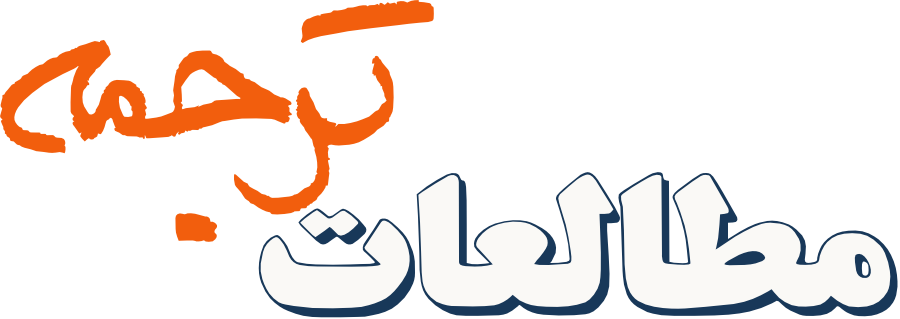مقایسه رشتۀ ترجمۀ شفاهی در ایران و جهان و ضرورت ایجاد این رشته در دانشگاههای ایران
چکیده
دنیای امروز را نمیتوان بدون ترجمه و مترجم شفاهی در نظر گرفت. این مسئله را کشورهای مختلف درک کرده و اقداماتی مؤثر در این راستا انجام دادهاند. بهعنوان نمونه، دانشگاههای متعددی در سراسر دنیا اقدام به تفکیک ترجمه مکتوب و ترجمه شفاهی کردهاند و برای هر یک برنامهای توانش-محور معرفی کردهاند. تحقیق توصیفی حاضر وضعیت موجود و ضرورت ایجاد رشته «ترجمه شفاهی» در ایران را با مقایسه دانشگاههای مطرح جهانی و دانشگاههای ایران مورد بررسی قرار داده است. نتایج تحقیق اولاً نشان داد که ترجمه شفاهی در دانشگاهها و سازمانهای بینالمللی بسیار حائز اهمیت بوده و از این رو در حال حاضر این رشته در دانشگاههای مختلف خارجی در مقطع کارشناسی ارشد در حال برگزاری است. این در حالی است که هیچیک از دانشگاههای ایران تاکنون این رشته را در هیچ مقطعی ارائه نکرده است. ثانیاً، به دلیل عدم ارائه این رشته، بیشتر افراد حاضر در حرفه ترجمه شفاهی در ایران افرادی هستند که در سایر رشتهها و گرایشهای زبانی تخصص دارند و آشنایی علمی و نظری چندانی با ترجمه شفاهی و توانشهای مورد نیاز ندارند. بنابراین، تحقیق حاضر ایجاد رشته ترجمه شفاهی در مقطع کارشناسی ارشد و تفکیک آن از ترجمه مکتوب را یک ضرورت قلمداد میکند تا بتوان از این طریق افرادی ماهر را تربیت و روانه بازار کار کرد.
کلمات راهنما:
برنامۀ آموزشی دانشگاهها, ترجمۀ شفاهی, ترجمۀ مکتوب, توانش ترجمانی/ترجمۀ شفاهیمراجع
Beikian. A. (2020). A comparative evaluation of the curricula of Iranian and international English translation and interpreting B.A., M.A., and PhD programs: Stakeholders' views in the spotlight (Doctoral dissertation). University of Isfahan, Isfahan, Iran.
Dabaghi, A., Moeinzadeh, A., & Mobasheri, M. (2015). Accreditation of interpreter training courses curriculum in bachelors of English translation in Iranian universities. International Journal of Applied Linguistics & English Literature, 4(6), 1–7.
Dal Fovo, E. & Gentile, P. (2019). Translation and interpreting: Convergence, contact and interaction. UK: Peter Lang.
European Commission. (n.d). https://ec.europa.eu/education/knowledge-centre-interpretation/universities_en
Gillies, A. (2019). Consecutive interpreting: A short course. New York: Routledge.
Kalina, S. (2000). Interpreting competence as a basis and a goal for teaching. The Interpreters' Newsletter 10, 3–32.
Kermis, M. (2008). Translators and interpreters: Comparing competences (Master’s thesis). Universiteit Utrecht, Amsterdam, Netherlands.
Lederer, M. (2007). Can theory help translator and interpreter trainers and trainees? The Interpreter and Translator Trainer 1(1), 15–35.
Meng, Q. (2017). Promoting interpreter competence through input enhancement of prefabricated lexical chunks. Journal of Language Teaching and Research, 8(1), 115–121.
NAATI (2015). NAATI translator certification: Knowledge, skills and attributes. Retrieved from: https://www.naati.com.au/media/1059/translator_ksa_paper.pdf
NAATI (2016). NAATI interpreter certification: Knowledge, skills and attributes. Retrieved from https://www.naati.com.au/media/1262/interpreter-ksa-paper-final_290216_2.pdf
Niska, H. (2002). Community interpreter training: Past, present, future. In: G. Garzone, and M. Viezzi (Eds.), Interpreting in the 21st Century (p. 133–144). Amsterdam/Philadelphia: John Benjamins.
Oraki, A., & Tajvidi, G.-R. (2020a). Simultaneous interpreting competence: A case study. Translation Studies Quarterly, 17(68), 37–56. Retrieved from https://journal.translationstudies.ir/ts/article/view/759
Oraki, A., & Tajvidi, G.-R. (2020b). Training translators and interpreters: The need for a competence-based approach in designing university curricula. Iranian Journal of English for Academic Purposes, 9(2), 42–56.
Pöchhacker, F. (2015). Routledge encyclopedia of interpreting studies. New York: Routledge.
Pöchhacker, F. (2016). Introducing interpreting studies. New York: Routledge.
Riccardi, A. (2019). The concept of strategies in translation and interpreting studies: Shared and dissimilar features. In E. Dal Fovo, & P. Gentile (Eds.), Translation and interpreting: Convergence, contact and interaction (pp 63–85). UK: Peter Lang.
Sawyer, D.B. (2004). Fundamental aspects of interpreter education. Amsterdam/Philadelphia: John Benjamins.
Schäffner, C. (2000). Running before walking? Designing a translation programme at undergraduate level. In C. Schàffner and B. Adab (Eds.), Developing translation competence (pp. 143–156). Amsterdam/Philadelphia: John Benjamins.
Schäffner, C. (2004). Translation research and interpreting research: Traditions, gaps and synergies. USA: Multilingual Matters Ltd.
Seleskovitch, D. (1994). Interpreting for international conferences: Problems of language and communication. USA: Pen & Booth.
Shaw, S., Grbic, N., & Franklin, K. (2004). Applying language skills to interpretation. Interpreting 6(1), 69–100.
Zidar Forte, J. (2012). Acquiring specific interpreting competence. Linguistica, 52(1), 113–127.
Zinukova, N. (2015). Interaction of translation and interpreting competences in future interpreters’ training: Science and education a new dimension. Pedagogy and Psychology, 34(69), 17–19.
Downloads
چاپشده
ارجاع به مقاله
شماره
نوع مقاله
DOR
مجوز
Copyright Licensee: Iranian Journal of Translation Studies. This article is an open access article distributed under the terms and conditions of the Creative Commons Attribution–NonCommercial 4.0 International (CC BY-NC 4.0 license).





